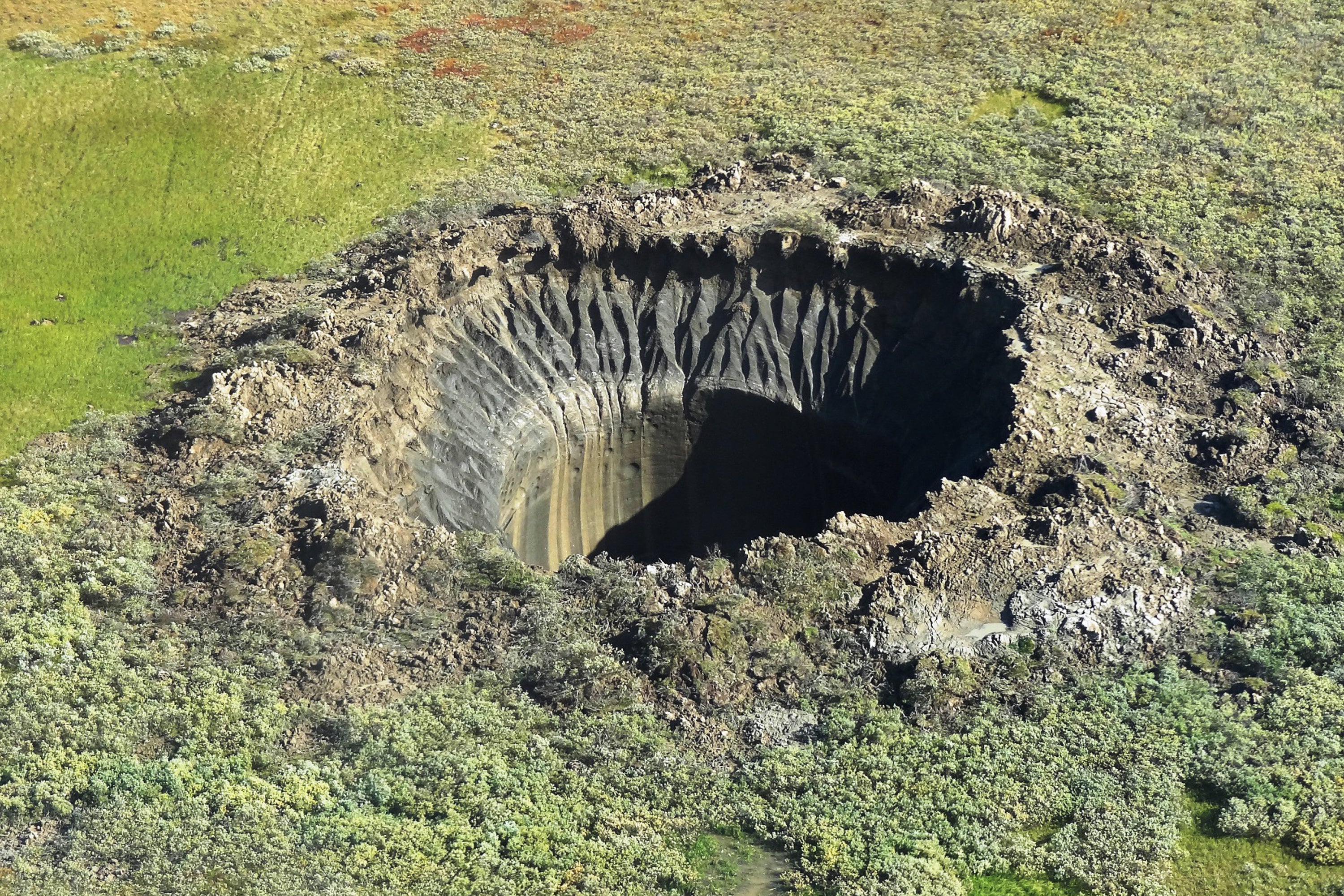Scientists may have finally solved the mystery of giant exploding craters spotted in western Siberia, known to blast soil and ice hundreds of feet into the air.
These craters, known as giant gas emission craters (GECs), were first spotted in the Yamal and Gydan peninsulas of Western Siberia in 2012 and can be as deep as 164ft, spewing soil and ice hundreds of feet into the air.
For over a decade, researchers have attempted to explain how these giant holes originated, with theories ranging from meteor impacts to natural gas explosions.
However, current theories do not adequately explain their presence in this specific area in Siberia, and not in other parts of the Arctic’s frozen soil, or permafrost.
“GECs have so far only been observed in the Yamal and Gydan peninsulas, suggesting that some specifics in this region can trigger the formation only here and not elsewhere in the vast Arctic belt of permafrost,” researchers wrote in a new study published in the journal Science of the Total Environment.
“The recent discovery of eight gas escape craters in Western Siberia has challenged researchers for the past decade. The GECs have only been observed in this limited region,” they wrote.

Existing theories suggest that only the soil’s internal processes are responsible for the formation of GECs.
However, the new study offers a more thorough explanation linking these odd craters to factors unique to the two peninsulas – their vast gas reserves and accelerated warming due to climate change.
According to the new theory, these craters form when gas and heat rise from deep underground, with the heat melting the top permafrost seal, making it thinner.
The gas rises and builds pressure, while a warming climate thaws the permafrost even more, causing an explosive collapse of the soil, creating a large hole.
“This study critically reviews the existing models and concludes that focused deep heat and gas from below the permafrost may be the key factor allowing the formation of GECs,” scientists wrote.
Meanwhile, they say atmospheric heating also triggers their formation by accelerating thawing of permafrost and the formation of new lakes and rivers.
Researchers hope further fieldwork and computer simulations could test their theory.
Scientists hope to find more such craters in Siberia.
They believe GECs could be hiding in plain sight as they can quickly fill up with water and dirt, making them look like lakes formed of thawing ice.
Pentagon says troops can only be exempt from shaving their facial hair for a year
Partial solar eclipse at the bottom of the world closes out the year's sun and moon spectacles
Denmark leads an exercise in Greenland, with Russia in mind at a time of tensions with the US
Study lists daily habits that can slow dementia
Scientists reveal role of ‘youth molecule’ in slowing ageing
New evidence sheds light on puzzling discovery in Greenland’s ice sheet







